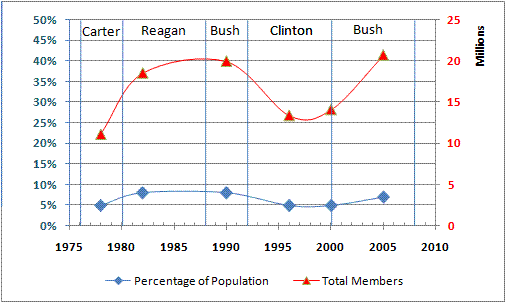Obama’s Scientific Integrity Memo
March 9th, 2009Posted by: admin
Today, Obama signed an executive order lifting Bush’s ban on the use of federal funds for stem cell research, along with a memo addressing the general issue of scientific integrity in executive branch agencies. Here’s an excerpt from the memo:
The public must be able to trust the science and scientific process informing public policy decisions. Political officials should not suppress or alter scientific or technological findings and conclusions. If scientific and technological information is developed and used by the Federal Government, it should ordinarily be made available to the public. To the extent permitted by law, there should be transparency in the preparation, identification, and use of scientific and technological information in policymaking. The selection of scientists and technology professionals for positions in the executive branch should be based on their scientific and technological knowledge, credentials, experience, and integrity.
For many, this is not just about opening the door to a particular kind of medical research; they view it as a fundamental change in the role played by science in policy.
This seems to emerge in the media coverage of the event. There is considerable discrepancy between the actual contents of the memo, and what the media (and those they interview) have been saying about it. For example, on NPR:
DeGette says that during the Bush administration, scientific policy was often dictated by things other than scientific evidence.
Well, yes, of course it was. As is often said on this blog, policy is never dictated by science, and Obama’s memo says nothing that would suggest otherwise. It is very much focused on process and openness, but makes no statements about how science should influence decision making.
The Washington Post quotes Harold Varmus (former NIH director, Nobel laureate, and Obama advisor):
Today’s executive order “is consistent with the president’s determination to use sound scientific practice . . . instead of dogma in developing federal policy”
This suggests that you can somehow use science instead of values to develop policy. But Obama’s stem cell decision is no less value driven than was George Bush’s. Regardless of your position, to come to a conclusion on the ethics of stem cell research you must wrestle with difficult issues such as the acceptability of destroying human embryos. Obama’s words and actions suggest nothing like the “determination” Varmus describes.
It’s important to remember that this event represents a political success — a shift away from one set of values, and toward another (though of course, it is not so black and white). It is not, by any means, a shift from politics toward science. Even if that were possible, it’s hard to see why it would be desirable.
